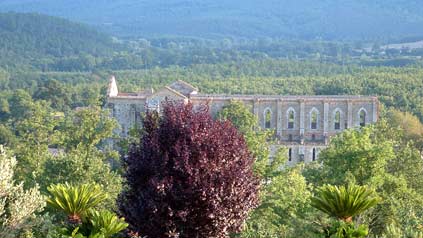|
|
Slow Tuscany
> Tuscany
> Siena
> Saint Galgano - the King Arthur of Tuscany
San
Galgano and the sword in the stone:
King Arthur in Tuscany
Damiano
Andreini
|
|
|
About forty kilometers (25 miles) south-east of Siena towards
Grosseto in an isolated valley among Siena's hills, lies an
antique Medieval Cistercense Abbey, now desecrated and partly
in ruins. About ten minute walking up the hill of Montesiepi
there is a small, circular chapel where one of the most fascinating
and mysterious relics of the entire region of Tuscany is kept:
the sword in the stone of Saint Galgano.
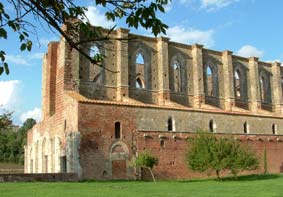
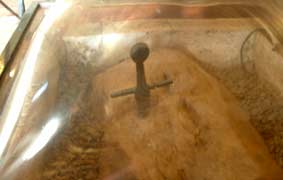
A jagged piece of rock protrudes from the center of the tile
floor of the chapel and in it lies the famous sword. The cross-shaped
sword has been proven to date back to 1170. In the chapel there
are even some frescos from the 1300's which depict the chapel
itself. The sight, to say the least, is evocative and immediately
brings to mind the well-known legend of King Arthur and his
sword in the stone. That's not a coincidence. Now lets look
at the history of the events.
Galgano was a young knight born a few kilometers from the city
of Siena, in Tuscany in the year 1147. The legend says that
one night Galgano had a vision of the archangel Michael. The
archangel was guiding him down a narrow and difficult path to
Montesiepi where he was eventually greeted by the twelve apostles
in front of a circular-shaped temple. Galgano interpreted this
vision to be a sign of the divine wish of God. In fact, some
time later this isolated place became his new and definitive
residence as a hermit. History tells us that he went to the
hill of Montesiepi, abandoned his past as a knight and drove
his sword into a stone. The sword was driven so deeply, and
with such great force, that only the handle, appearing in the
shape of a cross, remained visible on the surface of the stone.
That sword is still there and has served as a symbol of an incorruptible
conversion for the last 800 years.
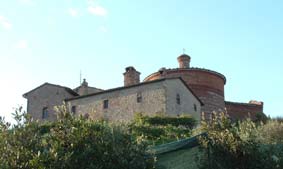
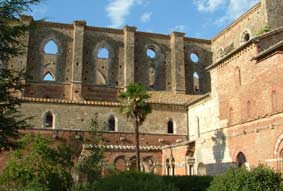
Aside from the utter amazement of the sword, there is another
extraordinary aspect to this story. This is the possibility
that the myth of the sword in the stone, known for being tied
to the saga of Britain's King Arthur, could have originated
right here in Tuscany and later have been exported to France
to become the famous legend of King Arthur. Some factors make
this hypothesis a plausible reality.
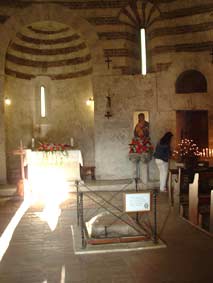

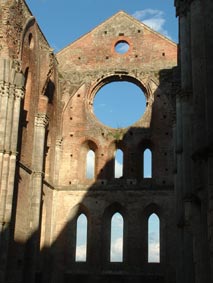
Both the Cistercense Abbey and the chapel dedicated to Saint
Galgano are of the same time period of King Arthur's tomb in
Glastonbury. This discovery must have resonated throughout Europe.
From history we know that the "Cistercense" Monks
were the key divulgers of King Arthur's story. We must ask ourselves
if the Monks were responsible for dispersing the echo of Arthur's
legend in Tuscany or rather, was the story born in Tuscany and
later adopted into Britain's history. Before leaving you I'd
like to remind you about some 15th century's paintings by Taddeo
di Bartolo which are kept in the National Museum in Pisa, depicting
the life of Saint Galgano.
Damiano Andreini
|
|
|
